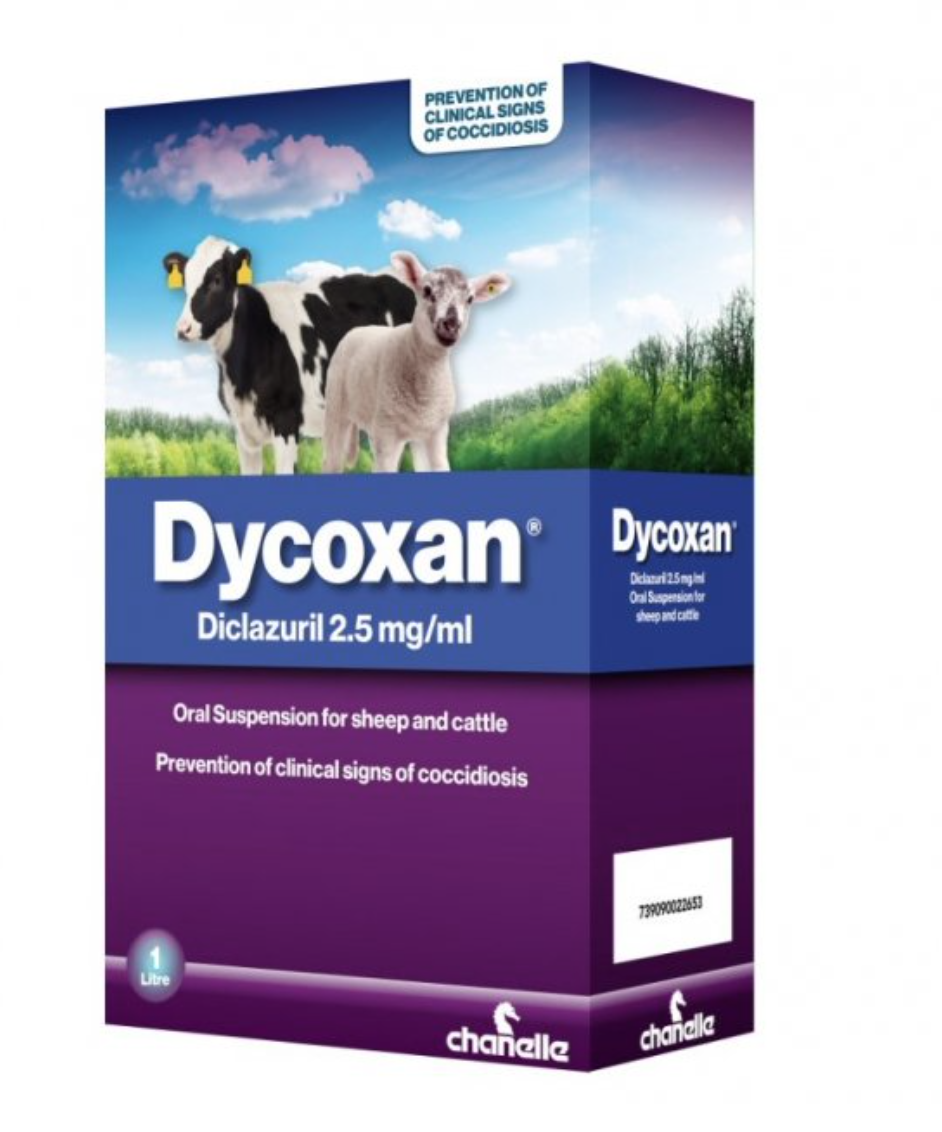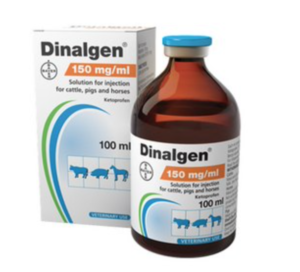Description
Dycoxan 2.5mg/ml Oral Solution
For use in calves and lambs
- In lambs: Prevention of clinical signs of coccidiosis caused by Eimeria crandallis and Eimeria ovinoidalis sensitive to diclazur.
- In calves: Prevention of clinical signs of coccidiosis caused by Eimeria bovis and Eimeria zuernii sensitive to diclazuril.
Dosage & Administration
Lambs
- A single oral administration of 1 mg diclazuril per kg bodyweight
- Or 1 ml the product oral suspension per 2.5 kg bodyweight at about 4-6 weeks of age at the time that coccidiosis can normally be expected on the farm.
- Under conditions of high infection pressure, a second treatment may be indicated about 3 weeks after the first dosing.
Calves
- A single administration of 1 mg diclazuril per kg bodyweight
- Or 1 ml the product oral suspension per 2.5 kg bodyweight, administered as a single dose, 14 days after moving into a potentially high risk environment.
- If a satisfactory response is not observed, then further advice should be sought from your veterinary surgeon and the cause of the condition should be reviewed. It is good practice to ensure the cleanliness of calf housing.






